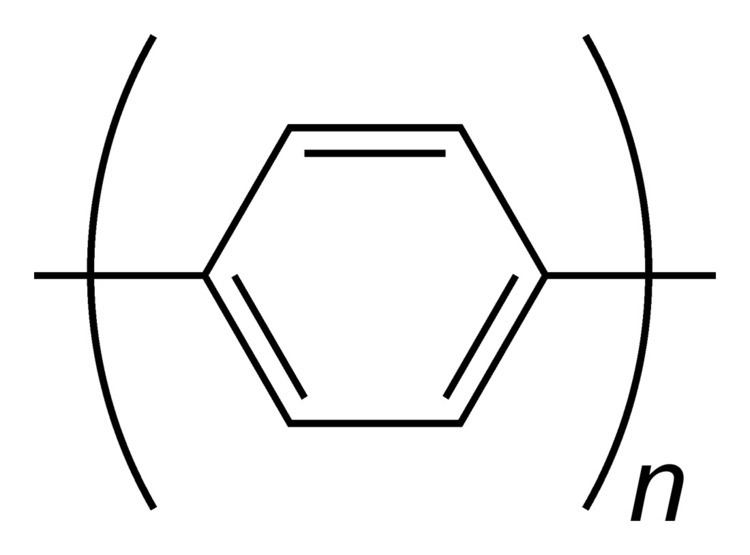 | ||
Poly(p-phenylene) (PPP) is the precursor to a conducting polymer of the rigid-rod polymer host family. Historically, PPP was very difficult to synthesize, although researchers have tried since at least 1886, when Goldschmeidt produced a 30-mer (based on elemental analysis) of PPP.[citation needed]
Early efforts typically produced black, insoluble powders that were difficult to characterize. For example, in 1962, a paper by Peter Kovacic (J. Polym. Sci. (1960), 47, 45), reports “The solid glowed red-hot in a Bunsen flame, with no evidence of flame formation, and disappeared only slowly.” Initially, the chemical and thermal stability of the material drove interest in its synthesis. It was used in rocket nozzles and some fabrics requiring high thermal stability.
Oxidation or the use of dopants is used to convert the non-conductive form to a semiconductor. It is made of repeating p-phenylene units.
